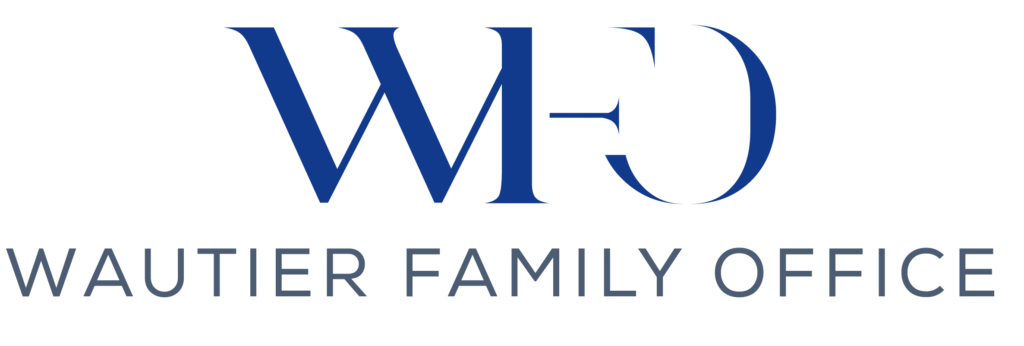Imagine a perfect set of fiscal levers. When pulled, each would produce a desired effect directly related to its use.
The economic stimulus would reliably lead to economic growth. Targeted job creation initiatives would lead to increased employment. Lower borrowing costs would create a corresponding and predictable increase in private sector investment in productive capacity.
As we know, these perfect levers do not exist. We operate in a messy, chaotic, and beautifully complex world shaped by globalization. In this world, fiscal policies reduce income inequality and support social welfare programs.
The question this piece aims to answer is ‘how much?’.
Taxation and Income Inequality
Government Spending and Social Welfare
Fiscal Policies and Economic Growth
Understanding Fiscal Policies
In this piece, ‘fiscal policies’ refers to the entire span of government spending and taxation decisions. They refer to governments’ strategies to influence a nation’s economy through taxation and government spending. These policies are designed to manage economic cycles, control inflation, and foster economic stability. However, they also play a critical role in shaping income distribution within a society.
They are instrumental in influencing the distribution of wealth within society and funding social welfare programs to support vulnerable populations.
Fiscal policies can be broadly categorized into two types: expansionary and contractionary.
Expansionary fiscal policies are most often implemented during periods of economic downturn or recession. These policies aim to stimulate growth by increasing government spending. They may also seek to reduce taxation levels simultaneously. The result of both options is the same: more money is put into the economy. The goal is to encourage consumer spending and investment, reduce unemployment, and support social welfare initiatives.
On the other hand, contractionary fiscal policies are used when the economy is ‘running hot.’ This may be evidenced by limited spare capacity in the employment market or periods of higher-than-average inflation. Contractionary fiscal policies are designed to cool down an overheated economy by decreasing government spending or raising taxes. The effect is that less money circulates in the economy.
When considering income distribution, fiscal policies aim to reduce disparities between different socioeconomic groups through progressive taxation, where higher-income individuals are taxed at a higher rate. Governments then use those tax receipts to redistribute wealth in a manner that the voters who elected them deem acceptable.
Vulnerable populations are subject to the adverse effects of income inequality. Targeted government spending on social welfare programs, such as healthcare, education, and unemployment benefits, ensures that those segments of society that need it receive the support they need.
Taxation and Income Inequality
Progressive taxation is a cornerstone of fiscal policy aimed at reducing income inequality. The simple guiding idea is that higher-income individuals should pay a larger percentage of their tax earnings. Progressive taxation is designed to ensure that those who have the greatest ability to contribute to public finances do so at a proportionately higher rate. The net effect of policies that support progressive taxation is redistributing wealth from the more wealthy to fund public services and social welfare programs that benefit the less wealthy.
Focusing on an individual’s ‘after-tax’ income is the best way to view this. That’s because one of the primary ways progressive taxes help reduce income inequality is by directly lowering the after-tax income gap between the wealthy and the less affluent. Income taxes that impose higher rates on higher income brackets effectively reduce the amount of disposable income available to the wealthiest segments of society. At the same time, by collecting these taxes, governments obtain revenue that can be invested in public goods and services accessible to all citizens. Medicare and disability support payments are just two examples of these public services.
Income tax is the most common tax mechanism used for progressive taxation. A less common and more contested type of taxation is wealth taxation, which targets the accumulated assets of the wealthy, such as property, investments, and savings. Inheritance taxes are another mechanism that prevents the concentration of wealth across generations by taxing the transfer of large estates from one generation to the next.
Government Spending and Social Welfare
Social welfare programs are government initiatives designed to provide financial assistance, healthcare, education, and other essential services to individuals and families in need. These programs are critical to the social safety net, which aims to reduce poverty and support vulnerable populations.
Government spending plays a pivotal role in sustaining these social welfare programs. For instance, healthcare programs like universal health coverage ensure that all citizens can access necessary medical services regardless of income, helping reduce the financial burden of medical expenses on low-income families.
Education spending is another critical component of this safety net. Governments facilitate greater social mobility opportunities and reduce long-term income inequality by investing in education.
Social security programs and unemployment benefits offer a safety net for the retired, disabled, or temporarily unemployed. These programs ensure that individuals who cannot earn an income can still meet their basic needs, preventing them from falling into poverty.
Balancing Fiscal Policies
There is a critical understanding to absorb at this point: no ‘perfect’ level of taxation, income redistribution, and social spending can be attained. Instead, it is better to realize that elected officials implement fiscal policies within liberal democracies. Therefore, the fiscal policies that exist are those that the general electorate has deemed acceptable by their votes for the elected representatives that propose and sustain those programs.
What is ‘right’ for one nation may not be suitable for another, just as what is right for a country at a particular time might not be suitable for it a generation later. Fiscal policies are a product of the environment that produced them and are subject to adjustment and change.
With that said, the importance of balancing fiscal policies becomes apparent. It involves carefully managing the relationship between taxation and government spending to achieve economic goals while maintaining social equity. The equilibrium between these two elements is crucial.
One of the primary challenges in designing effective fiscal policies is finding the right balance between generating sufficient revenue through taxation and allocating that revenue towards government spending on social welfare programs.
Taxing too high can stifle economic growth, discourage investment, and reduce overall productivity. If taxation is too low, the government may lack the necessary funds to finance essential public services and social programs.
Another challenge is ensuring that fiscal policies are responsive to the economy’s changing needs. For instance, during economic downturns, governments may need to implement expansionary fiscal policies, such as increasing spending or cutting taxes. However, if left intact for too long, such measures can lead to higher budget deficits and increased national debt. In turn, this could pose long-term economic risks if not managed carefully.
Fiscal policies can have unintended consequences if they are not well-targeted or interact with other economic factors in unforeseen ways. We have seen some evidence of this in recent years. A government’s attempt to stimulate the economy through increased spending could lead to inflationary pressures in certain sectors if the economy is already near total capacity. It is an incredibly narrow tightrope to walk!
Fiscal Policies and Economic Growth
When fiscal policies are designed to reduce income inequality, they address social justice and contribute to broader economic benefits. Equitable fiscal policies can create a more balanced distribution of wealth, leading to a more robust and resilient economy.
When lower-income households have more disposable income, they are likely to spend a more significant portion of it, stimulating demand for goods and services. This increased demand can drive economic growth by encouraging businesses to invest in production, hire more workers, and innovate.
The long-term impact of social welfare programs on human capital and productivity is another crucial aspect of how fiscal policies can support economic growth. Social welfare programs, such as those providing access to education, healthcare, and social security, play a significant role in enhancing individuals’ well-being and capabilities.
Public education perhaps provides the most ‘pure’ and simple to grasp expression of this phenomenon. Government funding can ensure that children from all socio-economic backgrounds have access to quality education, which enhances their future employment prospects and earning potential.
Social welfare programs can also stabilize social cohesion during economic downturns. During recessions, these programs provide a safety net for those most affected, helping to maintain consumer spending and prevent the economy from falling into a deeper slump. This stabilization effect can help economies recover more quickly from downturns, meaning that the personal and economic scar tissue from economic downturns is minimized.
International Perspectives
The differing approaches taken by different nations with their fiscal policies that aim to reduce income inequality and support social welfare programs provide a fascinating array of options for studious and evidence-driven policymakers to consider. A globalized world allows us to compare these approaches and learn valuable lessons about what works (and what doesn’t) to achieve more equitable societies.
Many Scandinavian countries have strong welfare states supported by high taxation levels. Sweden, Norway, and Denmark have implemented comprehensive social welfare systems that provide citizens with universal healthcare, free or heavily subsidized education, and robust social security benefits. These programs are funded through progressive taxation, where higher earners pay a larger share of their income in taxes compared to countries like the United States.
Countries like the United States take a more mixed approach to fiscal policy. They combine progressive taxation with targeted social welfare programs. While the U.S. does have significant social welfare spending, it relies more heavily on private sector involvement. This approach has led to significant debates about the effectiveness of U.S. fiscal policies in addressing income inequality, particularly given the country’s relatively high levels of income disparity compared to other developed nations.
Germany’s approach to fiscal policy emphasizes a balance between social welfare spending and fiscal discipline. The country maintains a robust social safety net while adhering to strict budgetary rules, such as the ‘debt brake’ law, which limits the federal government’s ability to run deficits.
In contrast, some developing nations struggle with implementing effective fiscal policies due to limited resources and high levels of informal employment. Countries like Brazil and South Africa have made strides in reducing income inequality through programs like Bolsa Família in Brazil. This two-decade-old program provides direct cash transfers to low-income families. However, ongoing challenges to sustainably fund these programs have emerged, with the nation often relying on external borrowing or volatile commodity revenues to fund the program.
In developing countries, the key lesson is the importance of targeting fiscal policies to address the most pressing social needs while building capacity for long-term sustainability. One innovative way to institute this is via programs like conditional cash transfers. These tie the policy’s outcome (a payment or the level of that payment) to specific outcomes (such as children’s school attendance or health check-ups). Mechanisms like this can achieve the twin goals of reducing poverty and promoting social development.
Key Takeaways
We do not exist in a world with perfect fiscal levers. In their place, we have a world shaped by imperfect, complex, and exciting globalization. However, we can still target our fiscal policies more effectively.
Educating the populace and the policymakers who serve them is a vital first step. By understanding the various components of fiscal policy—such as taxation and government spending—we can collectively learn how these tools are used to fund essential services and promote economic stability.
It is also crucial to clearly and concisely explain the links between taxation, especially progressive taxation, and generating the revenue required to support social welfare programs that benefit society as a whole. This education forms the bedrock of the ‘social license’ to levy taxation on a populace to deliver these programs.
However, crafting these policies is replete with challenges and trade-offs. Balancing taxation and spending requires careful consideration to avoid unintended consequences. International perspectives provide valuable lessons by showing varying experiments and experiences that highlight the need for context-specific solutions that are acceptable to the society that enacts and maintains them.
Fiscal policies will remain a cornerstone in the ongoing effort to address income inequality and support social welfare programs. These policies will evolve as the populations and policymakers implementing and maintaining them change. With the crosscurrents of generational, demographic, and technological coalescing, carefully designing and implementing these policies will be crucial in promoting social equity and economic stability for future generations.




